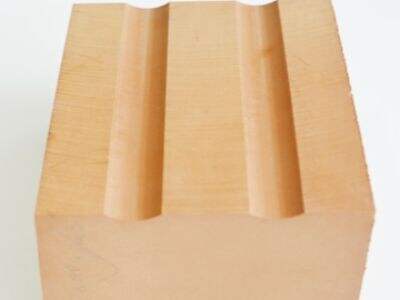Ever seen one of those huge factories with a machine that lifts super heavy things way to the ceiling range? Tremendously interesting to see, is it not? Have you ever thought about how it works? A key component of this massive machine is the head sheave. You may have not heard of it yet, but it is a main and crucial component of a hoist. A hoist is a type of machine used for the lifting of heavy-premises or heavy-duty objects. In this article, we will discuss in detail what is a head sheave, how does head sheave function, and why they play a vital role in safe and effective lifting of loads.
What is a Hoist?
First of all, we should talk about hoist. A hoist is a machine that is capable of lifting large amounts of mass off the ground. Hoists can be found in numerous locations and you may have come across them in factories where products are manufactured, construction sites where structures are being constructed, or even in warehouses where a variety of goods need to be stored. A hoist lifts these heavy handles via a powerful rope or cable. This rope is actually twisted from many steel wires, with the advantage of high load, high strength, good impact resistance, high toughness, high elongation, relative to its thickness.
What Is the Working Principle of Head Sheave?
With that behind us, allow us to define the head sheave and how it works. Head sheave is a circular like pulley with a specific groove line. This is the groove through which the rope or cable passes. As the hoist lifts an object, the rope travels through the groove within the head sheave. This is critical to the operation of the hoist, allowing smooth motion as the rope travels up and down. Preventing the Rope from Foundering or Getting Caught The head sheave In the event of tangling of the rope, serious issues can happen and it can also become a threat to the people working near.
Why the Head Sheave Matters
The head sheave plays a key role in the operation of the hoist. If the rope were to get stuck or tangled or could not make, you know, if the sheaves were not able to move you would have an issue — by moving — unaided without the head sheave. That would render the lifting of heavy objects extremely challenging and dangerous. The head sheave also controls the tension of the rope, which is critical for safe lifting.
The extent of friction, however, also makes for an important concept. It is the energy that brings movement to a halt or makes a body unable to start moving. Because the rope travels over the head sheave repeatedly in service, some friction can develop between the rope and the sheave. When that happens, the reaction between friction, and heat generation will wear out the rope fast, bad. That friction can be minimized by providing a head sheave to guide the rope smoothly through its groove. In this manner, the head sheave assists the hoist in functioning optimally and safely.
Making Lifting Easier
We require a great amount of force to lift heavy things. At first, when you are trying to move a very heavy object, for example, a large box. It takes a lot of strength! The same goes for a hoist. That head sheave therefore keeps the rope taut, which helps when it comes to lifting heavy loads. A badly guided rope would require a far heavier force to lift an object, making the hoisted load far more difficult to operate.
In short, the head sheave directly affects the ease or difficulty with which a hoist operator can lift a load. The head sheave lets the operator pull heavy items with less effort as long as the rope is kept taut and guided properly.
Keeping the Rope in Line
Keeping the rope moving in a straight line is another key function of the head sheave. This is pretty important because a rope cannot twist or curve around in any way. For instance, if the load is not balanced, then it could be unsafe. A head sheave keeps the rope in a straight line to facilitate true-up-and-down movement of the load while it is being lifted.
The head sheave also serves to keep the rope/guy in-flight. While lifting or lowering the heavy loads, the rope may eventually get some movement, forth and back. If it moves too much, big problems can arise. The head sheave is built to hold the rope in place, so the rope does not shift around or jump out of the groove. This ensures everything stays safe through the lift.
ხარისხის საკითხები
The head sheave, like all components of a hoist, must be built well. A poorly manufactured head sheave can cause a number of issues, including making the hoist less efficient, introducing possible safety hazards, and resulting in extended downtimes when maintenance and repairs are required. That is the reason why it is necessary to utilize good quality head sheaves. High-quality head sheaves from Luoyang Weka, for example, guarantee that a hoist runs safely, efficiently and smoothly.
Overall, while the head sheave may be a small part of a hoist, it is certainly an important one. It directs the rope, minimizes friction, assists with lifting, and aligns the rope. To make the hoist works well, a good head sheave is a must-have. While now we will appreciate how head sheave works, we also begin to realize the technology used for now to lift a great mass of objects and importance to a safe lifting operation too.















































